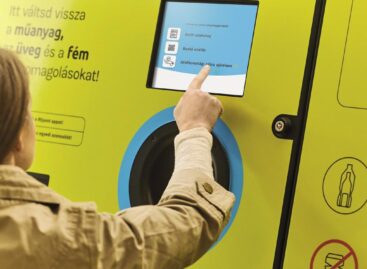Deli counter
Today, time and the money we have at our disposal have become the two major factors determining shopping decisions. More precisely, the sensation of combining these factors effectively is what matters to us. The time required for shopping also depends on the purpose of the purchase we intend to make. Time and money play their part in a very complex environment, with innumerable brands and offers. It is natural for consumers to experience a high degree of uncertainty in such an environment and to allow emotional factors linked to retail units to have a substantial influence on their decisions. Stores need to reassure customers that they are in the right place where they can make the purchase best suited to their needs. Apart from the classic four P-s, layout and the communication of the store also play an important role in generating a positive sensation. The larger a store is, the bigger the risk of some shelves remaining unnoticed by customers will become. Research has confirmed that the ease of orientation inside the store is one of the key elements of customer satisfaction. Transparency and ease of passage are needed to achieve a steady flow of customers. A well thought out layout will have a noticeable effect on sales of various categories. Some categories require more space in order to allow customers time to make a decision. It should also be possible to make changes in layout flexibly to accommodate seasonal categories. Theft prevention and ease of replenishment are also factors to be taken into consideration in designing a layout for stores, because the last 10 meters is regarded by experts as the costliest part in the logistic chain. However, we need to be careful with any changes in store layout, as customers do not like radical changes. If customers are forced to spend too much time finding what they need, they will not like the store, regardless how good prices are. The entrance and the cash register zones are the two key areas. Bakery, vegetable and deli counters are the most frequented places in the store. These are usually located far from the entrance, in order to get the largest number of customers to cover the greatest possible distance inside the store. Deli counters have survived the triumph of the self-service concept and remain essential components of all distribution channels, with the exception of discount stores. With a sufficient range of delicacies and fresh products, these can practically guarantee success. According to Judit Halmosi, trade marketing manager of PICK SZEGED Zrt., deli counters can lure customers to stores from great distances and also away from the stores visited regularly in the past. On the basis of U&A research conducted last year, Krisztina Bódi, marketing director of Kométa has found that customers are perfectly aware of the advantages and disadvantages of products sold in deli counters. The overwhelming majority of customers like deli counters. It has been found by PICK that customers of processed meat prefer to buy from deli counters. Pre-packaged products are preferred by customers with less time, typically the younger age groups. Prices in deli counters are usually regarded by customers as lower than that of pre-packaged products. Customers also believe that products in deli counters contain less preservatives. Store staff has a key role in operating deli counters effectively by keeping them clean and providing a good service.
Related news
Related news
(HU) Idei győztes sorrend: Grand Automotive East, Tesco Magyarország, Nestlé Hungária
🎧 Hallgasd a cikket: Lejátszás Szünet Folytatás Leállítás Nyelv: Auto…
Read more >Hungarian professional leadership also shaped global economic decisions at the historic B20 summit in South Africa
🎧 Hallgasd a cikket: Lejátszás Szünet Folytatás Leállítás Nyelv: Auto…
Read more >MOHU is preparing for post-holiday redemption with increased capacity
🎧 Hallgasd a cikket: Lejátszás Szünet Folytatás Leállítás Nyelv: Auto…
Read more >



